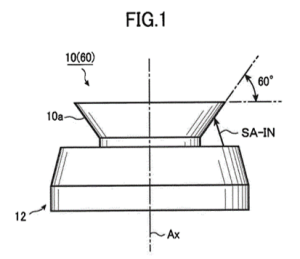In 2019, the European Patent Office’s (EPO) Guidelines for Examination were updated to remove the “purposive selection” requirement when assessing the novelty of sub-ranges. This meant it was no longer necessary for an applicant to demonstrate that the selected sub-range was associated with a particular technical effect. This recent decision from the Board of Appeal has possibly swung the test even further in the applicant’s favour.
A potted history of sub-ranges
Prior to 2019, the European Patent Office adopted a three-step approach to assessing the novelty of sub-ranges. For a given sub-range to be considered novel, it had to be:
- Narrow compared with the known range;
- Sufficiently removed from any specific examples disclosed in the prior art and from the endpoints of the known range; and
- May not be an “arbitrary specimen” of the prior art (also known as the “purposive selection” requirement)
In order to meet the “purposive selection” requirement, an applicant previously had to demonstrate that a new or improved technical effect had been observed within the claimed sub-range (and not across the wider “known” range) for it to be considered novel.
However, after the 2019 changes to the Guidelines, only points (1) and (2) needed to be satisfied for a sub-range to be considered novel over a known range, with point (3) being relevant only to the consideration of inventive step.
Background to the case
In 2016, Toyota Motor Corporation filed a patent application for a rotary atomizing electrostatic applicator; a device used in the automotive industry for painting vehicle exteriors. The device featured air holes orientated at a “twist angle” between 56 and 59 degrees. It was claimed that setting the “twist angle” to this range increased the coating efficiency of the device compared to conventional devices orientated at 40 degrees.

The patent was revoked during opposition for lacking novelty in view of an earlier device with a “twist angle” of 50 to 60 degrees. This decision was based on the three-step test, in which the Opposition Division concluded that:
- The claimed sub-range of 56 to 59 degrees was not narrow compared to the known range of 50 to 60 degrees.
- The claimed sub-range was not sufficiently removed from the examples and endpoints disclosed in the prior art.
- No surprising effect was associated with the claimed sub-range.
Toyota appealed the decision.
The Board of Appeal’s decision
On appeal, the Board confirmed that the criterion of purposive selection is relevant to the question of inventive step (rather than novelty) and so the Opposition Division was wrong to apply the three-step test when assessing the novelty of the claimed sub-range.
However, the Board of Appeal surprisingly chose not to apply the revised two-step test (as set out within the Guidelines) and instead opted for a different test altogether. The Board of Appeal reasoned that the concept of disclosure must be assessed in the same way regardless of whether it relates to a disclosure in the prior art (novelty) or a disclosure in a patent application (added matter).
In other words, only subject matter which the skilled person would have “derived directly and unambiguously” from the prior art can be considered to destroy the novelty of a given claim. This is often termed the “Gold Standard” test for added matter.
The Board of Appeal concluded that the claimed sub-range was not directly and unambiguously disclosed in the prior art and that the claimed sub-range of 56 to 59 degrees was, therefore, novel over the known range of 50 to 60 degrees.
The Board of Appeal also considered that the claimed twist angle of 56 to 59 degrees did indeed provide a relevant technical effect which was not taught within the prior art and therefore deemed the selection of this sub-range to involve an inventive step.
The decision of the Opposition Division was therefore set aside, and the patent was maintained as granted.
Conclusion
Based on this decision, the Board of Appeal appears to have applied a lower “novelty barrier” for inventions relating to sub-sets of known ranges.
However, the demonstration of a new or improved technical effect remains an important factor in determining whether a sub-range involves an inventive step. Therefore, arbitrarily selected sub-ranges are still likely to face an uphill battle before the EPO.
It will be interesting to see whether the Board’s decision will be more widely adopted in future cases, and whether the latest Guidelines for Examination (due to be published in March 2023) will be updated in view of this decision.
In any case, it certainly seems like this area of law is not yet entirely settled and could be developed significantly over the coming years.
Alex Harvey
Advanced Engineering group
This publication is a general summary of the law. It should not replace legal advice tailored to your specific circumstances.
© Withers & Rogers LLP February 2023

